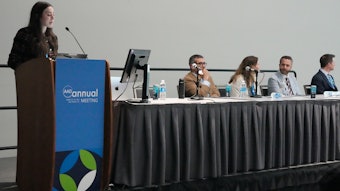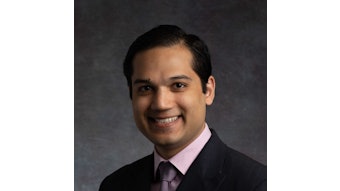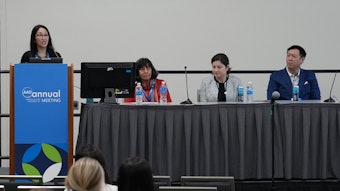Genetics and environment affect hair loss in women
Effective medical and supportive treatments are available.

Every day can be a bad hair day for patients with female pattern hair loss. Most often experienced as frontal accentuation, it begins as a widening of the hair’s part and progresses to thinning hair on the top and crown of the scalp.
In Friday’s session, F007 – Hair Loss in Women, Elise A. Olsen, MD, FAAD, a professor of dermatology at the Duke University School of Medicine in Durham, North Carolina, presented an overview of the key features of female pattern hair loss, including a miniaturization of dermal papillae effected hairs, a shorter anagen phase, as well as a longer resting state, decreased hair density, and hair loss in a cicatricial pattern.
“The most important thing is for clinicians to make the right diagnosis of female pattern hair loss, which can be made on clinical grounds alone in most cases,” Dr. Olsen said. She outlined the pharmacology of effective treatment strategies, including topical and low-dose oral minoxidil, 5-alpha reductase inhibitors, such as oral finasteride and oral dutasteride, topical finasteride, and oral antiandrogen medications.
Common causes
Central centrifugal cicatricial alopecia and frontal fibrosing alopecia are common causes of female pattern hair loss. Why do they happen? Amy J. McMichael, MD, FAAD, professor of dermatology at Wake Forest School of Medicine in Winston-Salem, North Carolina, discussed whether genetics or the environment are responsible.
“Evidence shows a genetic association that may be driven by the HLA-B*07:02 gene,” Dr. McMichael said. Recent data suggest that topical Janus kinase (JAK) inhibitors may be an effective treatment for frontal fibrosing alopecia. “That’s why we need genetic profiling. It can tell us how to treat our patients,” Dr. McMichael said.
“Your hairstyle shouldn’t hurt.”
Dr. McMichael also weighed in on the effect of sunscreen and hair relaxers in the pathogenesis of alopecia.
“There’s no direct association between sunscreen and frontal fibrosing alopecia,” Dr. McMichael said. “I tell my patients, ‘Don’t stop wearing sunscreen,’ but with chemical relaxers, we can’t say for sure. Mechanical tension from tight braiding can be a factor with traction alopecia. To help your patients avoid this condition, tell them, ‘Your hairstyle shouldn’t hurt,’” Dr. McMichael said.
Algorithm is gonna get ‘cha
Jerry Shapiro, MD, FAAD, professor and director of disorders of the hair and scalp at New York University’s Grossman School of Medicine in New York, presented a treatment algorithm for frontal fibrosing alopecia in patients with active disease, which included tacrolimus in cleanser, plus clobetasol solution and minoxidil solution or oral prednisone. The treatment choice is dependent on whether the disease is slowly or rapidly progressing, he said.
Options for stability
“Early intervention can potentially avert scarring and secondary complications,” Dr. Shapiro said. “I can stabilize the condition in 70% of people, but you have to tell people there’s a 30% chance that things may not work. It’s also important for patients to know that when treatment is effective, it can take 10 months to see results,” he said.
Dr. Shapiro also warns his female patients who have frontal fibrosing alopecia to avoid the use of chemical sunscreens and facial moisturizers with gallates, fragrances, linalool, and avobenzone/oxybenzone. Dr. Shapiro said there may be a link between the disease and these ingredients.
“My preferred sunscreens are mineral-based products, such as zinc oxide and titanium dioxide,” he said.
Crystal Aguh, MD, FAAD, associate professor of dermatology at the Johns Hopkins School of Medicine in Baltimore, added to the session with a discussion of medical therapies for central centrifugal cicatricial alopecia, including oral and topical metformin.
“Topical metformin is truly a wonder drug, but patients need to be aware of the big side effects, such as stomach upset, increased fertility, lactic acidosis, and weight loss,” she said.
Sergio Vano-Galvan, MD, PhD, IFAAD, concluded the session with a presentation on “Procedural treatments for hair loss: Mesotherapy with antiandrogens, injected triamcinolone, PRP, botulinum toxin, microneedling, and hair transplantation.”











